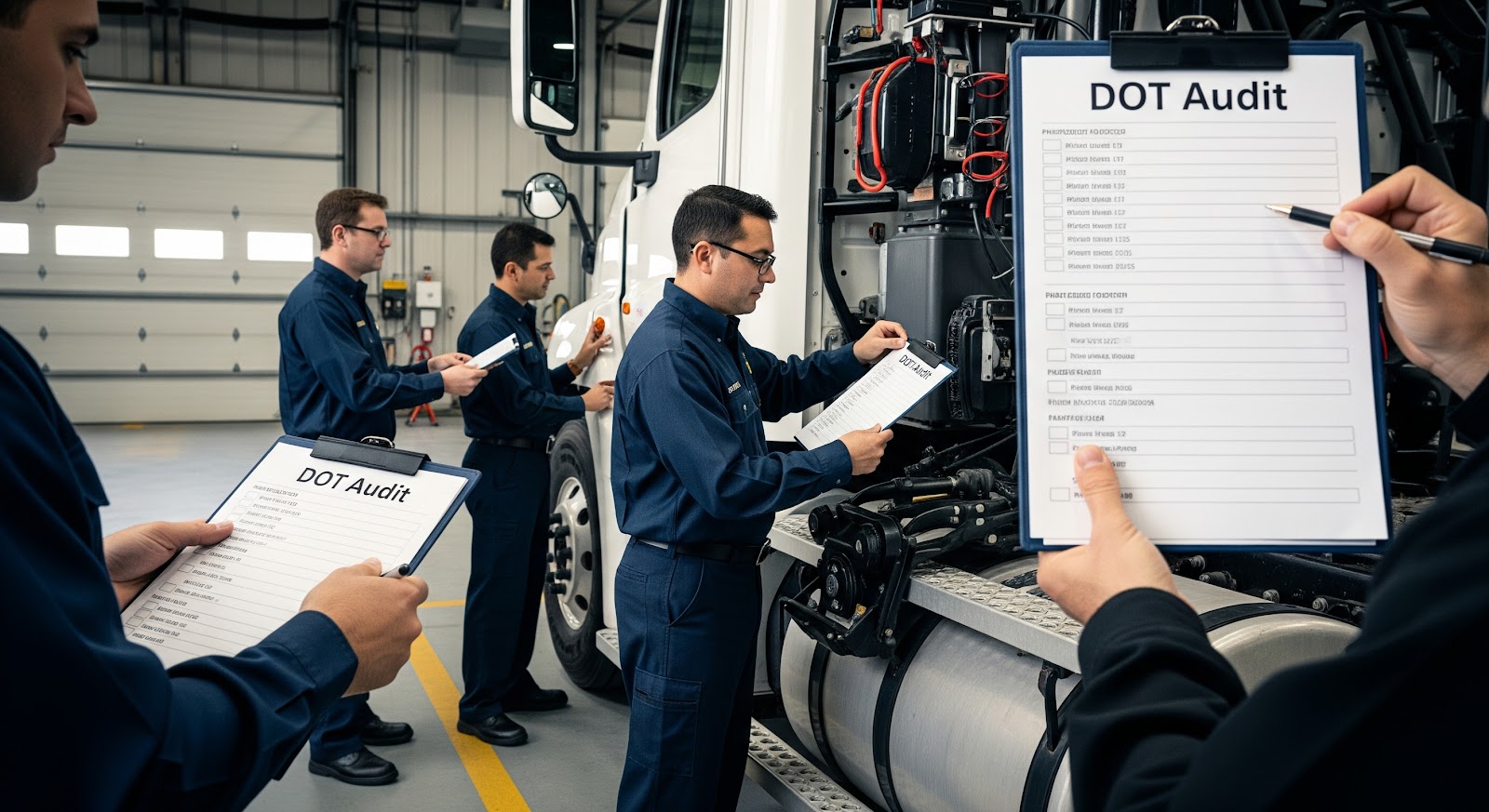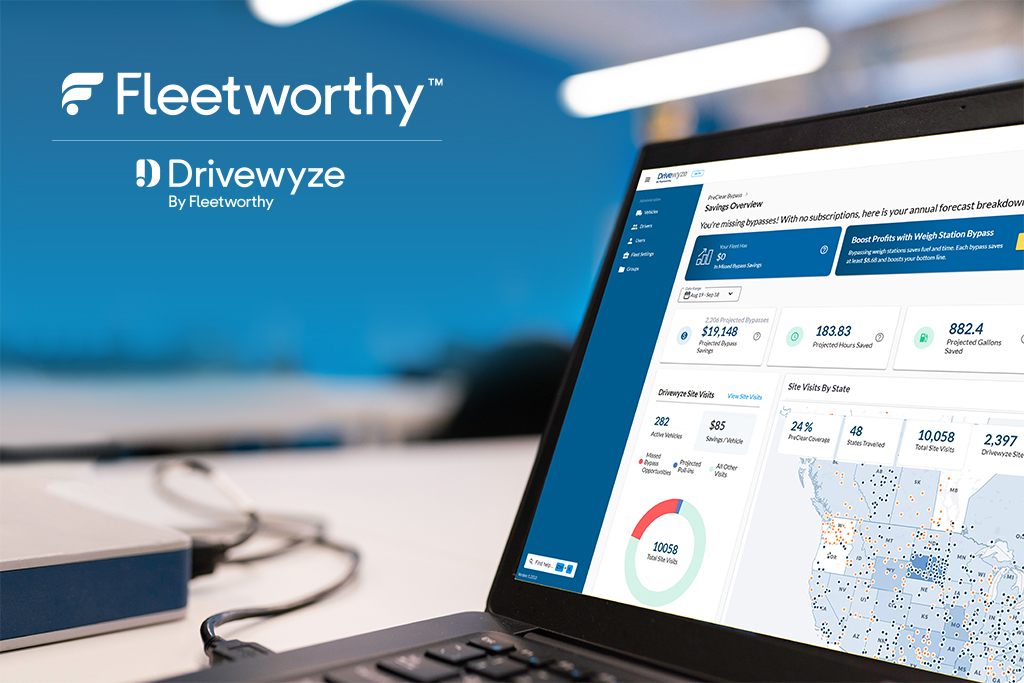DOT audits have always been a critical part of ensuring the safety and compliance of commercial motor carriers, but the landscape is evolving. As technology advances and regulatory expectations rise, DOT audits are becoming more complex, more data-driven, and more rigorous than ever before.
In the past, DOT audits primarily focused on paperwork, physical inspections, and reactive enforcement. Today, federal and state agencies leverage real-time data, telematics, and digital record systems to identify high-risk carriers and initiate audits, sometimes with little warning. With CSA (Compliance, Safety, Accountability) scores, electronic logging devices (ELDs), and driver behavior analytics all feeding into compliance profiles, fleets must be prepared for audits that are both comprehensive and technology-centric.
This shifting landscape means that fleet operators can no longer afford to take a reactive approach. Waiting until an audit is scheduled—or worse, until you’ve failed one—is no longer an option. Let’s dive in and ensure your operation is ready for what’s ahead.
What is a DOT Audit?
At its core, a DOT audit is an official review conducted by the U.S. Department of Transportation (DOT) or its sub-agency, the Federal Motor Carrier Safety Administration (FMCSA), to ensure that motor carriers comply with federal safety regulations. The primary purpose is to verify that your operation is following the rules designed to promote safe vehicle operation, prevent accidents, and ensure drivers are qualified and properly managed.
For fleet operators, understanding the different types of audits is essential:
- Compliance Reviews: These are comprehensive assessments of a carrier’s entire operation, typically triggered by poor safety performance, high CSA scores, or serious incidents. Investigators examine everything from driver records to vehicle maintenance, hours-of-service (HOS) logs, and drug and alcohol testing programs.
- DOT Safety Audits: Required for new entrants, these audits assess whether a carrier has the necessary safety management controls in place to operate legally. While less intense than a full compliance review, failing a safety audit can lead to revocation of operating authority.
- New Entrant Audits: Carriers that recently obtained their USDOT number must undergo this audit within the first 12 months of operation. It’s designed to confirm that new businesses understand and comply with federal safety regulations from the start.
While the foundation of these audits remains rooted in regulatory compliance, the methods used to conduct them are rapidly evolving. DOT audits rely heavily on digital data—everything from ELD logs to telematics reports and roadside inspection histories. Regulators now have near-instant access to key safety performance indicators, meaning fleets with data gaps, inconsistencies, or patterns of non-compliance face increased scrutiny.
This shift toward data-driven audits makes it more important than ever to maintain organized, accurate, and accessible records. Audits are no longer strictly event-based; they can be initiated based on real-time performance trends or electronic monitoring. For modern fleet operations, preparation isn’t just about passing an audit—it’s about building a system that keeps your fleet audit-ready every day.
DOT Audit Checklist: Key Items to Prepare
A DOT audit checklist is one of the most practical tools fleet managers can use to ensure their operation is always prepared for an inspection or compliance review. Whether you’re facing a scheduled audit or a surprise investigation triggered by a roadside inspection, accident, or poor safety score, being able to quickly produce required records can mean the difference between passing the audit or facing costly fines and penalties.
The importance of having a thorough checklist cannot be overstated. With the DOT’s increased reliance on digital records, telematics data, and real-time monitoring, auditors now expect faster, more organized access to critical information. A checklist ensures nothing gets overlooked and reduces the risk of non-compliance due to missing or incomplete documentation.
Essential Documents to Include in Your DOT Audit Checklist:
Here are the core items every fleet should have readily accessible to meet DOT audit requirements:
- Driver Qualification Files (DQFs): DQFs are a cornerstone of any compliance audit. They must be current and complete, including:
- Copies of Commercial Driver’s Licenses (CDLs)
- Medical examiner’s certificates
- Motor Vehicle Records (MVRs) from each state the driver has held a license
- Documentation of driver training and certifications
- Records of safety performance history inquiries
- Annual driving record reviews
- Copies of Commercial Driver’s Licenses (CDLs)
- Vehicle Maintenance and Inspection Records: Auditors will closely review your vehicle files to ensure proper maintenance and inspections are being performed, including:
- Preventive maintenance schedules and records
- Daily vehicle inspection reports (DVIRs)
- Records of repairs and corrective actions
- Annual inspection certificates
- Any recall documentation
- Preventive maintenance schedules and records
- Hours of Service (HOS) Records: Compliance with HOS regulations is a major audit focus, especially with the implementation of Electronic Logging Devices. Your checklist should include:
- ELD data and reports
- Supporting documents for on-duty time (receipts, bills of lading, etc.)
- Records of duty status for each driver
- Documentation for any exemptions used
- ELD data and reports
- Drug and Alcohol Testing Program Records: Carriers are required to maintain and produce documentation proving compliance with federal drug and alcohol testing regulations, including:
- Pre-employment drug test results
- Random testing records and selection methodology
- Post-accident, reasonable suspicion, and return-to-duty test results
- Consortium agreements (if applicable)
- Chain of custody forms
- Pre-employment drug test results
- Accident Records: A record of all DOT-reportable crashes within the last three years, including:
- Accident register with details such as date, location, injuries, and fatalities
- Copies of police reports and internal investigations
- Documentation of corrective actions taken
- Accident register with details such as date, location, injuries, and fatalities
- Insurance Documentation: Proof of active liability insurance that meets federal minimum requirements.
- Safety and Compliance Policies: Written policies that demonstrate your company’s commitment to safety, including driver training programs, safety protocols, and procedures for handling violations.
By combining a thorough checklist with modern digital tools, fleets can reduce human error, streamline audit preparation, and demonstrate a higher level of operational control. This approach not only improves audit outcomes but also enhances daily
Meeting DOT Audit Requirements
Successfully passing a DOT audit starts with understanding—and meeting—the core requirements set by the Federal Motor Carrier Safety Administration. The DOT doesn’t just expect paperwork; it expects proof that your operation is built on safe practices, qualified drivers, and properly maintained vehicles.
Falling short of DOT audit requirements can result in fines, downgraded safety ratings, or even being ordered off the road. That’s why knowing exactly what’s expected—and staying proactive—is essential for keeping your fleet compliant.
Breakdown of DOT Audit Requirements
While each audit may vary slightly depending on your operation size, carrier type, and audit type (safety audit, compliance review, etc.), there are common requirements every carrier must be prepared to meet:
- Driver Qualification Files: Maintain complete, accurate DQFs for each driver, which must include:
- A valid Commercial Driver’s License (CDL)
- Medical examiner’s certificate and long-form physical
- Annual motor vehicle records (MVRs)
- Road test certificates or equivalent training verification
- Employment history and safety performance inquiries
- A valid Commercial Driver’s License (CDL)
- Vehicle Maintenance and Inspection Records: Proper documentation must show that your vehicles are safe and roadworthy, including:
- Preventive maintenance schedules
- Daily Vehicle Inspection Reports (DVIRs)
- Annual inspections and repair records
- Corrective action reports for any noted defects
- Preventive maintenance schedules
- Hours of Service (HOS) Compliance: Carriers are required to demonstrate compliance with HOS regulations by providing:
- ELD records
- Supporting documents (fuel receipts, dispatch records)
- Logs of duty status for each driver
- ELD records
- Drug and Alcohol Testing Program: Documentation proving your operation follows FMCSA drug and alcohol testing rules, including:
- Pre-employment testing results
- Random testing pool enrollment and selection processes
- Post-accident, reasonable suspicion, and return-to-duty test results
- Pre-employment testing results
- Accident Records: Maintain an accident register for all DOT-reportable crashes, including incident details and documentation of follow-up actions.
- Insurance Requirements: Proof of insurance that meets or exceeds federal minimums for liability coverage.
- Policies and Safety Procedures: Written policies covering key areas like driver safety, hours of service, vehicle inspections, and how violations or incidents are addressed.
- Record Retention: Compliance with FMCSA recordkeeping rules, which dictate how long you must retain various documents (e.g., DQFs for duration of employment plus three years).
Meeting these requirements isn’t a one-time task—it’s an ongoing process that demands continuous attention and documentation.
Staying Current with FMCSA Regulations
FMCSA regulations are not static; they evolve as technology advances, safety concerns shift, and new policies are introduced. To maintain compliance, fleet operators must actively monitor regulatory updates and adjust their practices accordingly.
Here are some strategies to stay current:
- Subscribe to FMCSA Alerts: The FMCSA regularly publishes updates, rule changes, and safety advisories. Signing up for email alerts helps you stay informed of changes that affect your operation.
- Leverage Industry Associations: Organizations like the American Trucking Associations (ATA) and state-level associations often provide timely updates, resources, and training opportunities to help carriers stay compliant.
- Conduct Internal Audits: Regular internal reviews of your files, driver records, and safety programs help catch potential gaps before they become audit failures.
- Invest in Training: Ongoing training for drivers, dispatchers, and management ensures your team understands evolving rules, including changes to HOS, drug testing protocols, and safety procedures.
- Utilize Compliance Technology: Modern fleet management software can automate document tracking, send reminders for expiring certifications, and integrate data from ELDs and telematics devices to help monitor ongoing compliance.
DOT regulations are constantly adapting to new challenges, from technology integration to updated safety standards. Staying informed and prepared positions your operation to not only pass audits but to operate more safely and efficiently overall.




